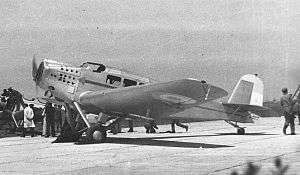
5-MeO-AET
5-Methoxy-alpha-ethyltryptamine (5-MeO-α-ET) is a psychoactive drug and member of the tryptamine chemical class. It produces psychedelic, entactogenic, and stimulant effects.
Dosage
5-MeO-α-ET, when used recreationally, is usually taken orally at dosages of 50–75 mg.
Effects
5-MeO-α-ET produces entactogenic and stimulant effects that can last 4–6 hours. However, little information exists on the psychopharmacological effects of this compound, thus considerable variation with regard to dosage and effects can be expected.
Dangers
There have been no reported deaths or hospitalizations from 5-MeO-α-ET, but its safety profile is unknown.
Legality
5-MeO-α-ET is unscheduled and uncontrolled in the United States, but possession and sales of 5-MeO-α-ET could be prosecuted under the Federal Analog Act because of its structural similarities to α-ET and α-MT.
See also
References
Meo (ethnic group)
Meo (pronounced May-o & Mev) (also called Mewati) is a Muslim Rajput from North-Western India, particularly in and around Mewat that includes Mewat district of Haryana and parts of adjacent Alwar and Bharatpur districts in Rajasthan. Meos speak Mewati, a language of the Indo-Aryan language family.
History and origin
Meos are inhabitants of Mewat, a region that consists of Mewat district of Haryana and some parts of adjoining Alwar and Bharatpur districts of Rajasthan and western Uttar Pradesh, where the Meos have lived for a millennium. They were Hindu Rajputs who converted to Islam between 12th and 17th century, until as late as Aurangzeb's rule but they have maintained their age-old distinctive cultural identity until today. They have shared this region with a number of other Muslim Rajput communities, such as Khanzada, Qaimkhani and Malkana.
Hindu origins
The Meo represent a blending of Hinduism and Islam. Meo profess the beliefs of Islam but the roots of their ethnic structure are in Hindu caste society. The neighbouring Hindu Jats, Minas, Ahirs and Rajputs share the same mores. According to some sources, the Meo community may have a common origin with the Meena community.
Meo (disambiguation)
Meo may refer to:
See also

MEO (Portugal)
MEO is a mobile and fixed telecommunications service and brand from Portugal Telecom, managed by MEO - Serviços de Comunicações e Multimédia. The service was piloted in Lisbon in 2006 and was later extended to Porto and Castelo Branco.
History
The commercial launch of the ADSL2+ service took place in June 2007. The satellite service began in April 2008, using the Hispasat satellite, soon followed by the FTTH service. The ADSL2+ and FTTH offers reached across Portugal and included broadband Internet services (at up to 400Mbit/s) as well as a telephone service.
MEO was officially founded after the separation of PT Comunicações and PT Multimédia (later ZON Multimédia). While PT Multimédia employed coaxial cables, after separation, MEO started making use of copper cables. The television service supplied by MEO within the copper cable network is served on the ADSL line.
In May 2009 PT Comunicações announced, after Terrestrial Digital Television (TDT) transmissions had started, that the triple play service was also available with fiber optic speeds can achieve 400 Mbits/s.
AET
AET may refer to:
AET (company)
AET Tanker Holdings Sdn Bhd, formerly American Eagle Tankers, is a Malaysian-owned global shipping company specialising in the ocean transport of crude oil and refined products. Its fleet of around 90 ships make it one of the leading providers of maritime transport to the international petroleum industry.
History
Originally a subsidiary of Neptune Orient Lines, American Eagle Tankers was formed in Houston in 1994 to serve the US Gulf lightering market. From a fleet of just three tankers, the company grew to become a major force in that rapidly developing market.
American Eagle Tankers became a wholly owned subsidiary of international logistics provider MISC Berhad (formerly the Malaysian International Shipping Corporation) in July 2003. At that time, American Eagle Tankers was operating around 25 vessels and this provided MISC with the critical mass and strategic positioning to serve its global petroleum customers with coverage in the Atlantic Basin, the Persian Gulf and the Far East.

FMA AeT.1
The FMA AeT.1 was an airliner built in Argentina in the early 1930s. It was a low-wing cantilever monoplane of conventional design, with fixed tailwheel undercarriage. Only three examples were built, christened General San Martín, Deán Funes, and Jorge Newbery. These aircraft provided Argentina's first scheduled airline services with Aero-Argentina, flying between Córdoba and Buenos Aires. The Deán Funes was also used to make a long-distance flight to Ushuaia, bringing the first mail to that town after a flight of 6,500 km (4,000 mi). Air France director Colin Jeannel flew as a passenger on that flight.
Specifications
General characteristics
Performance
Podcasts:

